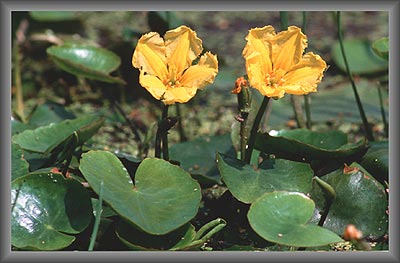Situated on the boundary between the Mediterranean and Continental climates of the Peninsular, the Marshes simultaneously shelter plants adapted to different climates; for example in the Ramone Marshlet, on the edges of the Chiusi Woods, still survive the Frogbit (Hydrocharis morsus-ranae) and the Royal Fern (Osmunda regalis), both plants from a warm wet climate, alongside certain mosses (Sphagnum sp.), more adapted to cold climates of the north and which descended as far as the Marshes during the last Ice Age.
Only in the Marshlet, and in a few other areas of the Marsh basin, can still be found fair extensions of the Tufted Sedge (Carex elata), locally called "sarello"; this plant of northern origin develops in bushy formations of more than one individual, giving the impression of islands floating on the water.
Today, unfortunately, the sedge stands have often been taken over by more resistant species, such as the Common Reed (Phragmites australis).
Where the immense reed thickets leave space to the free waters, are the "laminas" formed of plants with floating leaves (e.g. the large Yellow Water-lilies) which offer one of the last refuges for several highly specialised species: the Southern Bladderwort (Utricularia australis), a floating carnivorous plant, the Fringed Water-lily (Nymphoides peltata), dai bei fiori gialli; la strana Erba pesce o Salvinia (Salvinia natans), with its beautiful yellow flowers, and the strange, tiny floating fern Salvinia natans, now extremely rare in Tuscany.
Over the last few years, some species of alien animals have spread to such an extent that these plants, once widespread and common in the marshland basin, are now rare and localised.
Because of its characteristic vegetation and floristic peculiarities, the Fucecchio Marshes has been considered a biotope of particular interest and deserving protection in the list drawn up by the Italian Botany Society in 1979.




